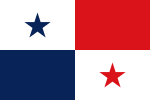Spanish 1/Adjectives & In a restaurant
Chapter 11 (Adjectives & In a restaurant)
[edit | edit source]Gender
[edit | edit source]- hombre - man
- mujer - woman
- joven - young man, young woman
- anciano(a) - elderly
Descriptions
[edit | edit source]- alto(a) - tall
- bajo(a) - short (stature)
- corto(a) - short (length)
- guapo(a) - good-looking (mostly use in Spain)
- buenmozo(a) - handsome (mostly use to describe males)
- bello(a) - beautiful (mostly use to describe females)
- bonito(a) - beautiful (general usage)
- feo(a) - ugly
- joven - young
- largo(a) - long
- viejo(a) - old
Hair descriptions
[edit | edit source]- pelo - hair (on body or head)
- cabello - head hair
- canoso(a) - gray
- castaño - brown (chestnut)
- negro(a) - black
- rubio(a) - blond
- pelirrojo(a) - red-haired
Useful expressions
[edit | edit source]- tener calor - to be hot
- tener frío - to be cold
- tener sueño - to be sleepy
- tener hambre - to be hungry
- tener sed - to be thirsty
Menu terms
[edit | edit source]- delicioso(a) - delicious
- desear - to want
- pedir - to order
- ¿Qué va a pedir usted? ¿Qué van a pedir ustedes?
- plato principal - main dish
- de plato principal - as a main dish
- postre - dessert
- de postre - for dessert
- ¿Cómo está la comida?
- La comida está muy rica.
- La comida está deliciosa. (The food is delicious)
On the table
[edit | edit source]- ¿Me pasa(s) la/el...? (Will you pass me the...?)
- azúcar - sugar
- cuchara - spoon
- cuchillo - knife
- pimienta - pepper
- plato - plate, dish
- sal - salt
- servilleta - napkin
- taza - cup
- tenedor - fork
- vaso - glass
Note: Sal is a feminine noun, therefore the salt would be la sal.
In a restaurant
[edit | edit source]- camarero - waiter
- camarera - waitress
- mesero - waiter
- mesera - waitress
- mesonero - waiter
- mesonera - waitress
- cuenta - bill
- propina - tip
- menú - menu
To order
[edit | edit source]- Me falta(n) ... - I need ...
- Quisiera ... - I would like to ...
- traer - to bring
- Le traigo ... - I will bring you ...
- ¿Me trae ...? Will you bring me ...?
- Traigo ... - I bring ...
Other words
[edit | edit source]- ahora - now
- ¿Algo más? - Anything else?
- De nada. - You're welcome.
- otro(a) - other, another
- ¡Qué ...! - How ...!
- Qué delicioso! - How delicious!
Venir (to come)
[edit | edit source]Like tener, venir is an irregular verb that has the same rule. In venir and tener, the e becomes ie except in nosotros(as) and vosotros(as). Like tener, the yo form is irregular from the rest as well.
- vengo - I come
- vienes - you come (singular)
- viene - he/she comes
- venimos - we come
- venís - you come (plural)
- vienen - they come
Note: Remember that usted (Ud.) and ustedes (Uds.) are conjugated in the 3rd person form.
Vocabulario adicional
[edit | edit source]- llevar anteojos - to wear glasses
- usar lentes - to wear glasses
- calvo(a) - bald
- delgado(a) - thin
- gordo(a) - fat
- barba - beard
- bigote - moustache
- pecas - freckles
- pelo lacio/liso - straight hair
- pelo rizado - curly hair
- trenzas - braids
Cultural Insight (Plazas)
[edit | edit source]In most Spanish cities, the plaza is the heart of nearly all activity, filled with cafés, a park, and usually the local market. It is usually the center of administration, held by three closely related institutions: the cathedral, the cabildo or administrative center, which might be incorporated in a wing of a governor's palace, and the audiencia or law court. The plaza might be large enough to serve as a military parade ground. At times of crisis or fiesta, it was the space where a large crowd might gather.
Country Focus (Panamá)
[edit | edit source]

Panama (Spanish: Panamá) is the southernmost country of Central America. Situated on an isthmus, some categorize it as a transcontinental nation connecting the north and south part of America. It is bordered by Costa Rica to the north-west, Colombia to the south-east, the Caribbean Sea to the north and the Pacific Ocean to the south. It is an international business center and is also a transit country. Although Panama is also the 3rd largest economy in Central America, after Guatemala and Costa Rica, it has the largest expenditure on resource consumption, making the country the largest consumer in Central America.
Prior to the arrival of Europeans, Panama was widely settled by Chibchan, Chocoan, and Cueva peoples, among whom the largest group were the Cueva. On November 3, 1903, Panama broke off from Colombia. The US gunboat Nashville prevented the Colombian military from sailing to Panama. An assault through the dense Panamanian jungle was impossible. On December 20, 1989, twenty-seven thousand U.S. personnel invaded Panama in order to remove Manuel Noriega. Under the Torrijos-Carter Treaties, the United States turned over all canal-related lands to Panama on December 31, 1999. Panama also gained control of canal-related buildings and infrastructure as well as full administration of the canal.

Factbox:
-Official Languages: Spanish
-Other Languages: English, Native American languages

-Capital: Panama City (Ciudad de Panamá)
-Government: Democracy
-Area: 75,517 sq km (29,157 sq mi) (118th)
-Population: 3,322,576 (132nd)
-Religion: Christianity (Catholic 75%, Protestant 15%, few Orthodox and Mormons) 90%, Buddhism 2.1%, Judaism 0.4%, Hinduism 0.3%, Islam 0.3%, Bahá'i 0.1%, other (Non-religious, Animism) 6.8%
-Human Development: 0.840 (60th, HIGH)
-Independence: November 3, 1903
-Currency: Balboa, U.S. Dollar (secondary)
